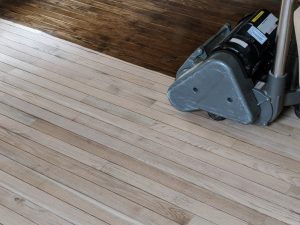Understanding the Importance of Sanding in Hardwood Floor Restoration
Why Choose Hardwood Floors?
Hardwood floors are a timeless and elegant choice for any home. They bring warmth, durability, and a touch of luxury to your living space. Over time, however, even the most well-maintained hardwood floors may start to show signs of wear and tear. This is where hardwood floor restoration comes into play.
One of the most critical aspects of restoring hardwood floors is sanding. Sanding is the process of removing the old finish, scratches, and imperfections from the surface of the wood. In this blog post, we’ll delve deep into why sanding is essential for hardwood floor restoration, and how it can breathe new life into your home.
The Benefits of Sanding for Refinished Hardwood Floors
Refinished hardwood floors can completely transform the look and feel of your home. Sanding is at the heart of this transformation, offering a multitude of benefits:
Surface Renewal: Sanding removes surface imperfections, such as scratches, dents, and stains, giving your hardwood floors a fresh, clean appearance.
Improved Durability: By sanding away the old finish and exposing the raw wood, your hardwood floors become more durable and better equipped to withstand daily wear and tear.
Enhanced Aesthetics: Sanding not only restores the beauty of your hardwood floors but also allows you to choose a new stain or finish, giving you the opportunity to customize your floors to match your interior design.
Healthier Environment: Removing old finishes and refinishing hardwood floors can eliminate allergens and dust that may have accumulated over time, creating a healthier indoor environment.
Increased Property Value: Refinished hardwood floors add significant value to your home, making it a wise investment for homeowners planning to sell in the future.
Unlocking the Beauty of Refinished Hardwood Floors
The Sanding Process
Understanding the sanding process is crucial for achieving exceptional results in hardwood floor restoration. Here’s an overview of the key steps involved:
Preparation: Before sanding begins, the room needs to be prepared. Furniture is removed, and any protruding nails or staples are safely secured.
Initial Sanding: Coarse-grit sandpaper is used initially to remove the existing finish and any surface imperfections. This step is vital for creating a level surface.
Intermediate Sanding: A finer grit sandpaper is used to smooth out the surface further, ensuring a uniform appearance.
Fine Sanding: The final sanding pass uses a very fine grit sandpaper to achieve a silky-smooth finish.
Staining and Finishing: After sanding, you can choose to stain your hardwood floors to achieve the desired color. The final step involves applying a protective finish to enhance durability.
Hardwood Floor Repair
In addition to refinishing, sanding also plays a crucial role in hardwood floor repair. If your hardwood floors have suffered from water damage, deep scratches, or extensive wear, sanding can often salvage the situation.
Professional hardwood floor repair experts, like those at Harrington Hardwood Floors, can assess the extent of the damage and determine whether sanding and refinishing are viable options. In many cases, sanding can restore the floor’s integrity and appearance, saving you the expense of a full replacement.
Maintaining Your Refinished Hardwood Floors
Once your hardwood floors have been sanded and refinished, proper maintenance is essential to ensure their longevity. Here are some tips to help you maintain the beauty of your refinished hardwood floors:
Regular Cleaning: Sweep or vacuum your floors regularly to remove dust and debris. Use a damp mop with a hardwood floor cleaner for deeper cleaning.
Avoid Excessive Moisture: Hardwood floors are sensitive to moisture. Clean up spills promptly and use rugs in areas prone to moisture, like kitchens and bathrooms.
Furniture Pads: Place felt pads under furniture legs to prevent scratches and dents when moving or rearranging furniture.
Routine Inspections: Periodically inspect your hardwood floors for any signs of wear or damage. Address any issues promptly to prevent further damage.
Professional Maintenance: Consider periodic professional maintenance to keep your floors in top condition.
A Renewed Home with Refinished Hardwood Floors
In conclusion, sanding is the cornerstone of hardwood floor restoration, offering numerous benefits, from revitalizing the appearance of your floors to increasing the value of your home. Whether you’re looking to refinish your hardwood floors for aesthetic reasons or need hardwood floor repair due to damage, Harrington Hardwood Floors is here to help.
Investing in the restoration of your hardwood floors can breathe new life into your home, providing a timeless and elegant look that will stand the test of time. So, if you’re dreaming of the beauty and warmth of refinished hardwood floors, take into account the importance of sanding in achieving that dream. Contact Harrington Hardwood Floors today to start your journey toward a renewed and stunning home.

